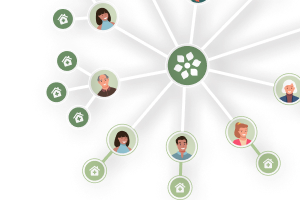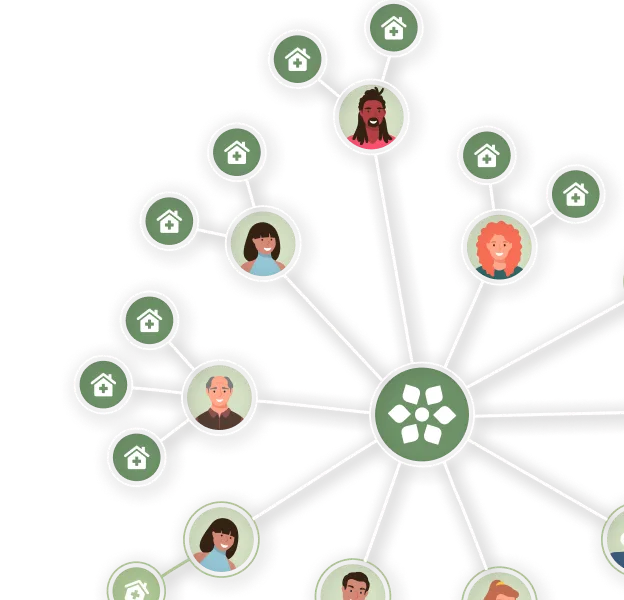New Strategies to Improve CAR-T Therapies for Multiple Myeloma

A short but very interesting paper has just been published in the journal Blood Advances that provides insights as to why some multiple myeloma patients have better outcomes than others when treated with anti-BCMA CAR-T. The authors start the paper with a bang:
‘Chimeric antigen receptor (CAR) T cells are a promising, emerging therapy for multiple myeloma. CAR T cells directed against the B-cell maturation antigen (BCMA) have demonstrated impressive initial results, but available data suggest that most patients with initial responses eventually progress.’
This may be nothing new for those who follow social media for multiple myeloma and CAR-T groups where plenty of stories are posted of short duration of CAR-T effectiveness.
The researchers behind the journal article had previously studied the effectiveness of anti-CD19 CAR-T in patients with chronic lymphocytic leukemia (CLL) ‘to identify predictors of clinical response’. This analysis revealed that:
‘Among all baseline disease- and patient-specific parameters analyzed, frequency of a memory T-cell subset, defined by a CD81 CD45RO2 CD271 immunophenotype, in the premanufacturing leukapheresis product was the only parameter identified to be significantly associated with clinical response.’
This is quite a mouthful that may need some explanation. Memory T-cells are a subset of infection and cancer-fighting T-cells that have previously encountered and responded to their cognate antigen. Such T-cells can recognize foreign invaders, such as bacteria or viruses, as well as cancer cells.
CD is shorthand for ‘clusters of differentiation’, specific proteins that can be found on the surface of T-cells and the numbers behind the CD refer to the specific proteins in question.
Leukapheresis is the procedure where a patient’s white blood cells (containing T-cells) are separated from blood.
Premanufacturing means that this that the leukapheresis step happened before the harvested T-cells are ‘engineered’ or transformed into CAR-T cells and then expanded to a quantity high enough to be used for treatment (typically to end up with well more than one million CAR-T cells).
The investigators hypothesized :
‘ … the frequency of T cells with the CD81 CD45RO2 CD271 phenotype and the CD4/CD8 ratio would be higher in multiple myeloma patients early in the disease course, when disease burden is low and prior exposure to therapy is minimal, compared with the relapsed/refractory disease setting.’ [emphasis added]
They tested their hypothesis by comparing both the frequency of the presence of the CD81 CD45RO2 CD271 phenotype as well as the CD4/CD8 ratio from patient samples who had only been given induction therapy (i.e., the first step of myeloma treatment) to samples from relapsed patients (who were actually part of clinical studies for anti-BCMA CAR-T treatment).
I encourage you to read the original paper. It is short (only a few pages) and very understandable (especially after a second reading) and provides a nice bit of education of how researchers go about testing their theories. Let’s go to its conclusions:
- ‘The results suggest that CAR-T cells manufactured from leukapheresis samples obtained after response to induction therapy would be, on average, more clinically effective than those obtained from heavily relapsed/refractory multiple myeloma patients.’ [Emphasis added]
- ‘Examination of T-cell phenotypes at additional intermediate time points between post-induction and heavily relapsed/refractory settings might refine the optimal window for T-cell collection.’
- ‘… our findings are hypothesis generating and provide rationale to evaluate the potency of CAR T cells generated from patients with multiple myeloma at different points in the disease course and from the CD45RO2 CD271 memory subset.’
- ‘Now that safety of anti-BCMA CAR T-cells has been demonstrated, clinical evaluation of CAR-T cells in earlier settings would be justified for high-risk patients, who typically respond well to first-line therapy but progress quickly and have a poor prognosis even with modern therapy.’ [Emphasis added]
This additional understanding of what may drive longer-term successful outcomes of CAR-T treatment in multiple myeloma, especially for high risk patients, is good news for all of us as it provides fresh hope for the future.
A short but very interesting paper has just been published in the journal Blood Advances that provides insights as to why some multiple myeloma patients have better outcomes than others when treated with anti-BCMA CAR-T. The authors start the paper with a bang:
‘Chimeric antigen receptor (CAR) T cells are a promising, emerging therapy for multiple myeloma. CAR T cells directed against the B-cell maturation antigen (BCMA) have demonstrated impressive initial results, but available data suggest that most patients with initial responses eventually progress.’
This may be nothing new for those who follow social media for multiple myeloma and CAR-T groups where plenty of stories are posted of short duration of CAR-T effectiveness.
The researchers behind the journal article had previously studied the effectiveness of anti-CD19 CAR-T in patients with chronic lymphocytic leukemia (CLL) ‘to identify predictors of clinical response’. This analysis revealed that:
‘Among all baseline disease- and patient-specific parameters analyzed, frequency of a memory T-cell subset, defined by a CD81 CD45RO2 CD271 immunophenotype, in the premanufacturing leukapheresis product was the only parameter identified to be significantly associated with clinical response.’
This is quite a mouthful that may need some explanation. Memory T-cells are a subset of infection and cancer-fighting T-cells that have previously encountered and responded to their cognate antigen. Such T-cells can recognize foreign invaders, such as bacteria or viruses, as well as cancer cells.
CD is shorthand for ‘clusters of differentiation’, specific proteins that can be found on the surface of T-cells and the numbers behind the CD refer to the specific proteins in question.
Leukapheresis is the procedure where a patient’s white blood cells (containing T-cells) are separated from blood.
Premanufacturing means that this that the leukapheresis step happened before the harvested T-cells are ‘engineered’ or transformed into CAR-T cells and then expanded to a quantity high enough to be used for treatment (typically to end up with well more than one million CAR-T cells).
The investigators hypothesized :
‘ … the frequency of T cells with the CD81 CD45RO2 CD271 phenotype and the CD4/CD8 ratio would be higher in multiple myeloma patients early in the disease course, when disease burden is low and prior exposure to therapy is minimal, compared with the relapsed/refractory disease setting.’ [emphasis added]
They tested their hypothesis by comparing both the frequency of the presence of the CD81 CD45RO2 CD271 phenotype as well as the CD4/CD8 ratio from patient samples who had only been given induction therapy (i.e., the first step of myeloma treatment) to samples from relapsed patients (who were actually part of clinical studies for anti-BCMA CAR-T treatment).
I encourage you to read the original paper. It is short (only a few pages) and very understandable (especially after a second reading) and provides a nice bit of education of how researchers go about testing their theories. Let’s go to its conclusions:
- ‘The results suggest that CAR-T cells manufactured from leukapheresis samples obtained after response to induction therapy would be, on average, more clinically effective than those obtained from heavily relapsed/refractory multiple myeloma patients.’ [Emphasis added]
- ‘Examination of T-cell phenotypes at additional intermediate time points between post-induction and heavily relapsed/refractory settings might refine the optimal window for T-cell collection.’
- ‘… our findings are hypothesis generating and provide rationale to evaluate the potency of CAR T cells generated from patients with multiple myeloma at different points in the disease course and from the CD45RO2 CD271 memory subset.’
- ‘Now that safety of anti-BCMA CAR T-cells has been demonstrated, clinical evaluation of CAR-T cells in earlier settings would be justified for high-risk patients, who typically respond well to first-line therapy but progress quickly and have a poor prognosis even with modern therapy.’ [Emphasis added]
This additional understanding of what may drive longer-term successful outcomes of CAR-T treatment in multiple myeloma, especially for high risk patients, is good news for all of us as it provides fresh hope for the future.

about the author
Paul Kleutghen
I am a patient diagnosed in 2014 with primary plasma cell leukemia (pPCL), a rare and aggressive variant of multiple myeloma and have been very fortunate to find successful treatment at the division of Cellular Therapy at the Duke University Cancer Institute. My wife, Vicki, and I have two adult children and two grandsons who are the ‘lights of our lives’. Successful treatment has allowed Vicki and I to do what we love best : traveling the world, albeit it with some extra precautions to keep infections away. My career in the pharmaceutical industry has given me insights that I am currently putting to use as an advocate to lower drug pricing, especially prices for anti-cancer drugs. I am a firm believer that staying mentally active, physically fit, compliant to our treatment regimen and taking an active interest in our disease are keys to successful treatment outcomes.
More on Treatment Advances
Trending Articles




Get the Latest Multiple Myeloma Updates, Delivered to You.
By subscribing to the HealthTree newsletter, you'll receive the latest research, treatment updates, and expert insights to help you navigate your health.














